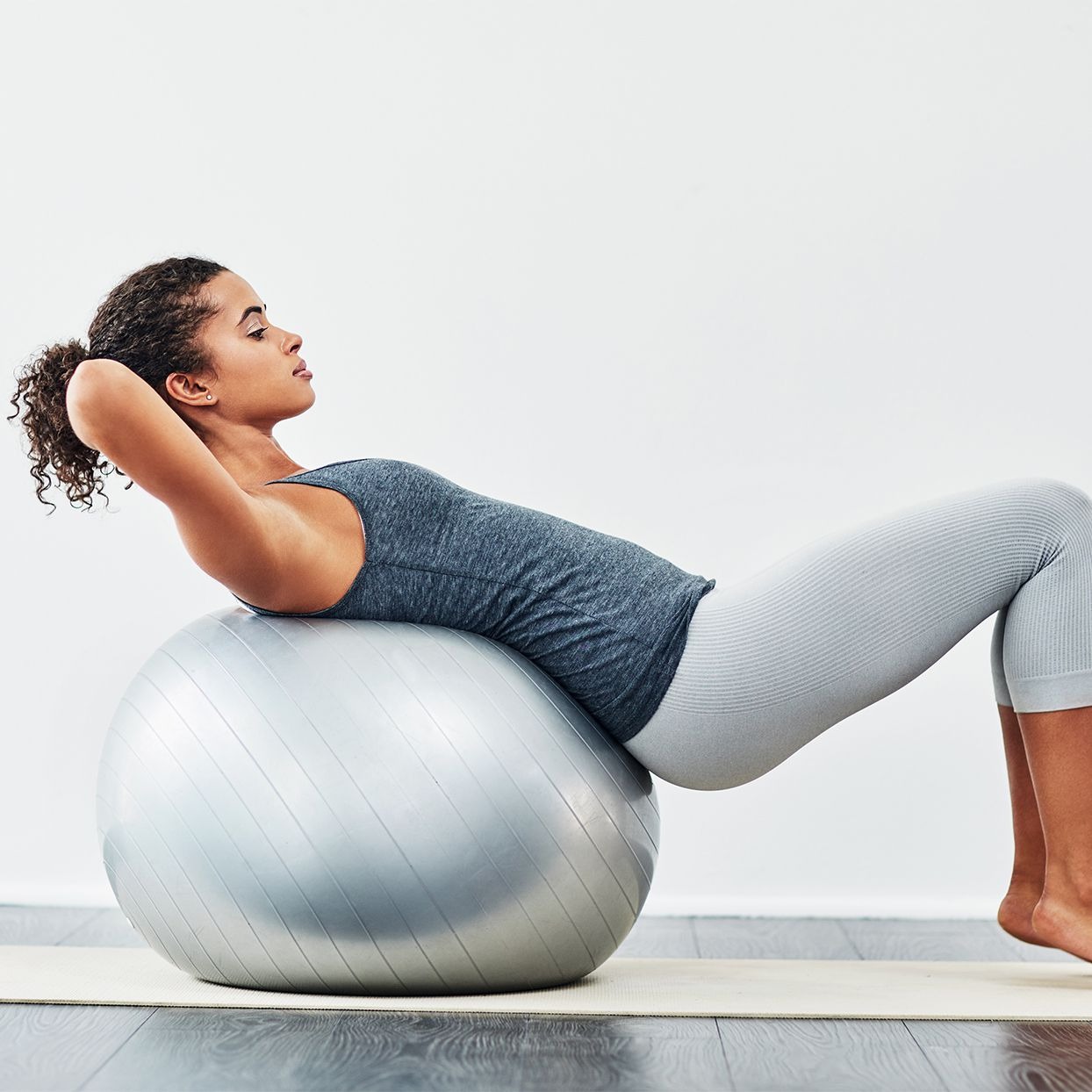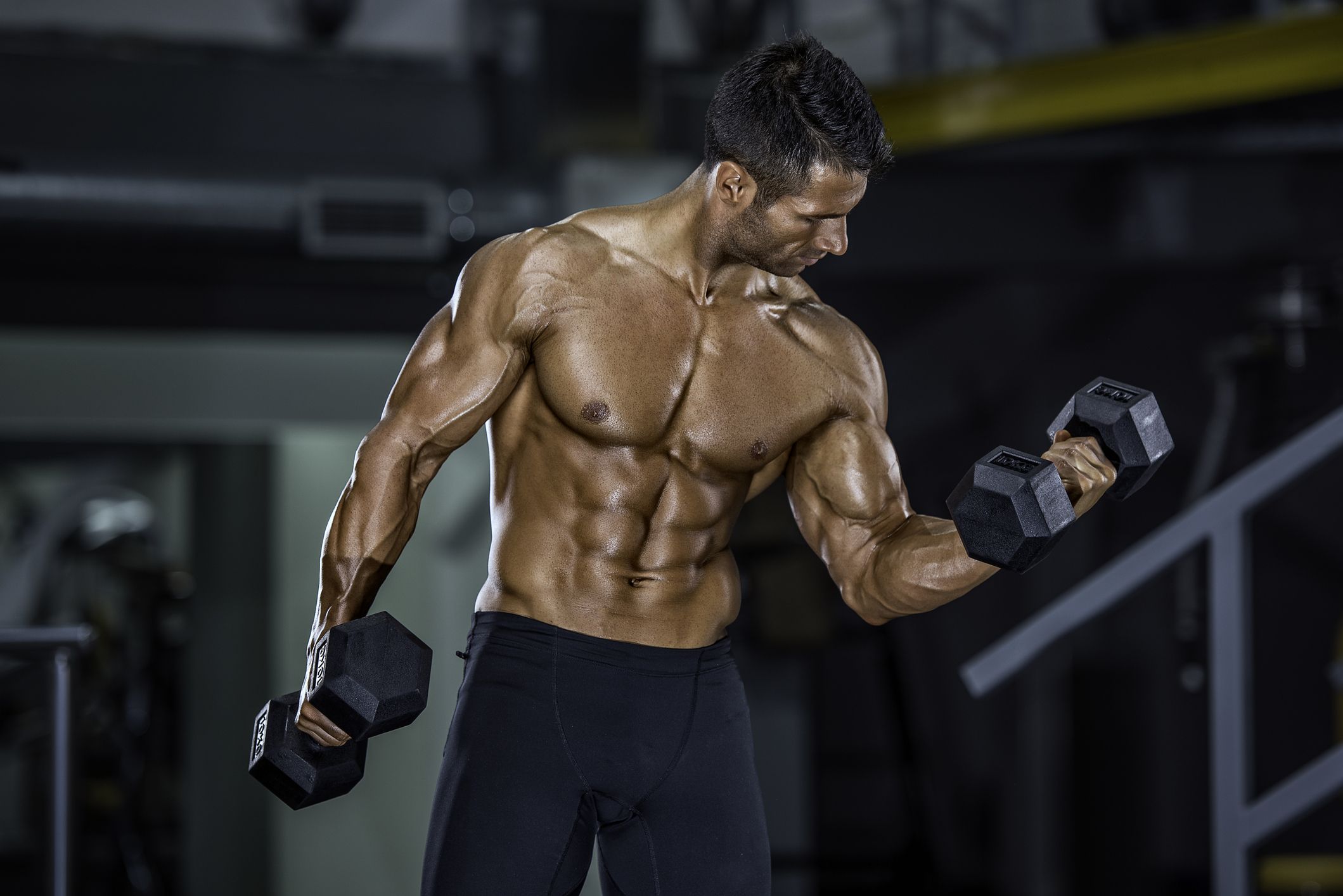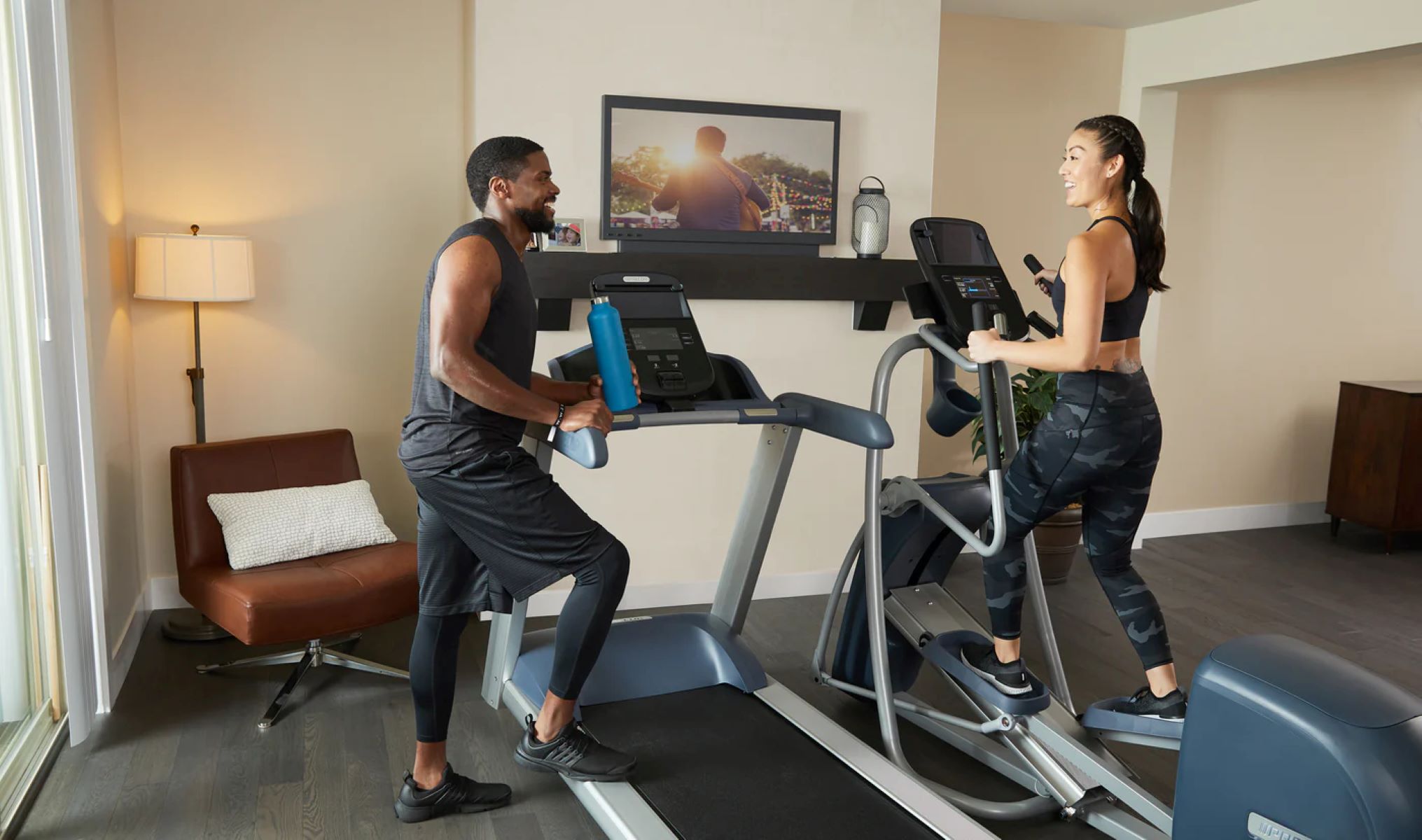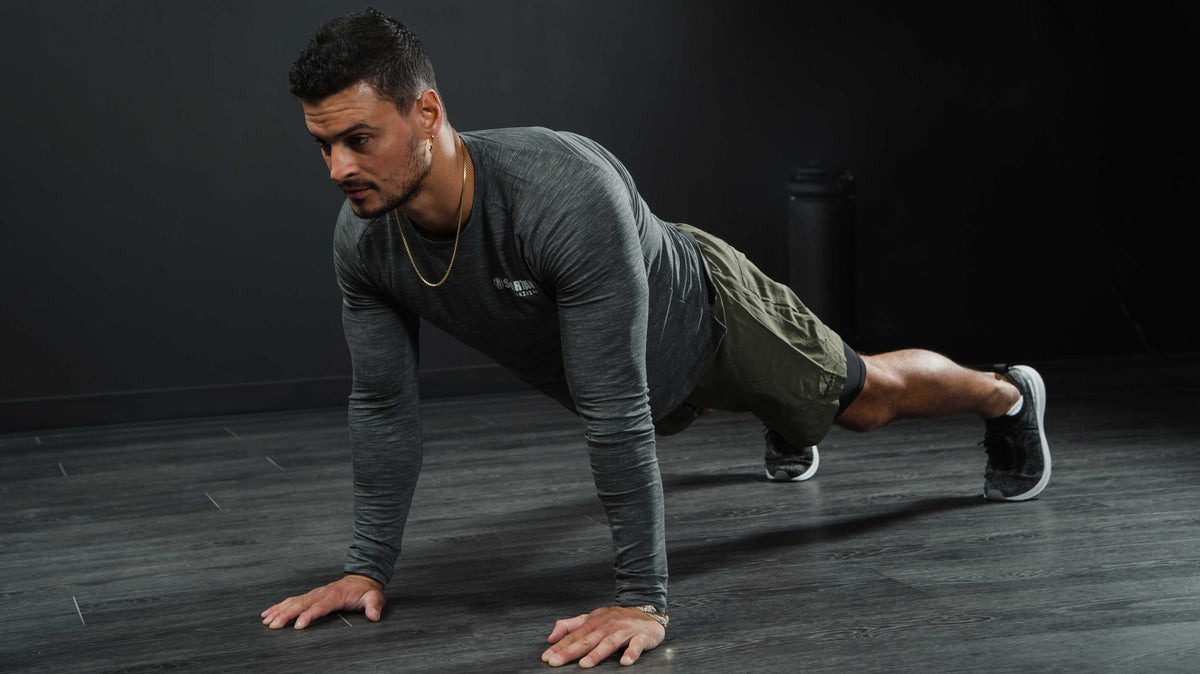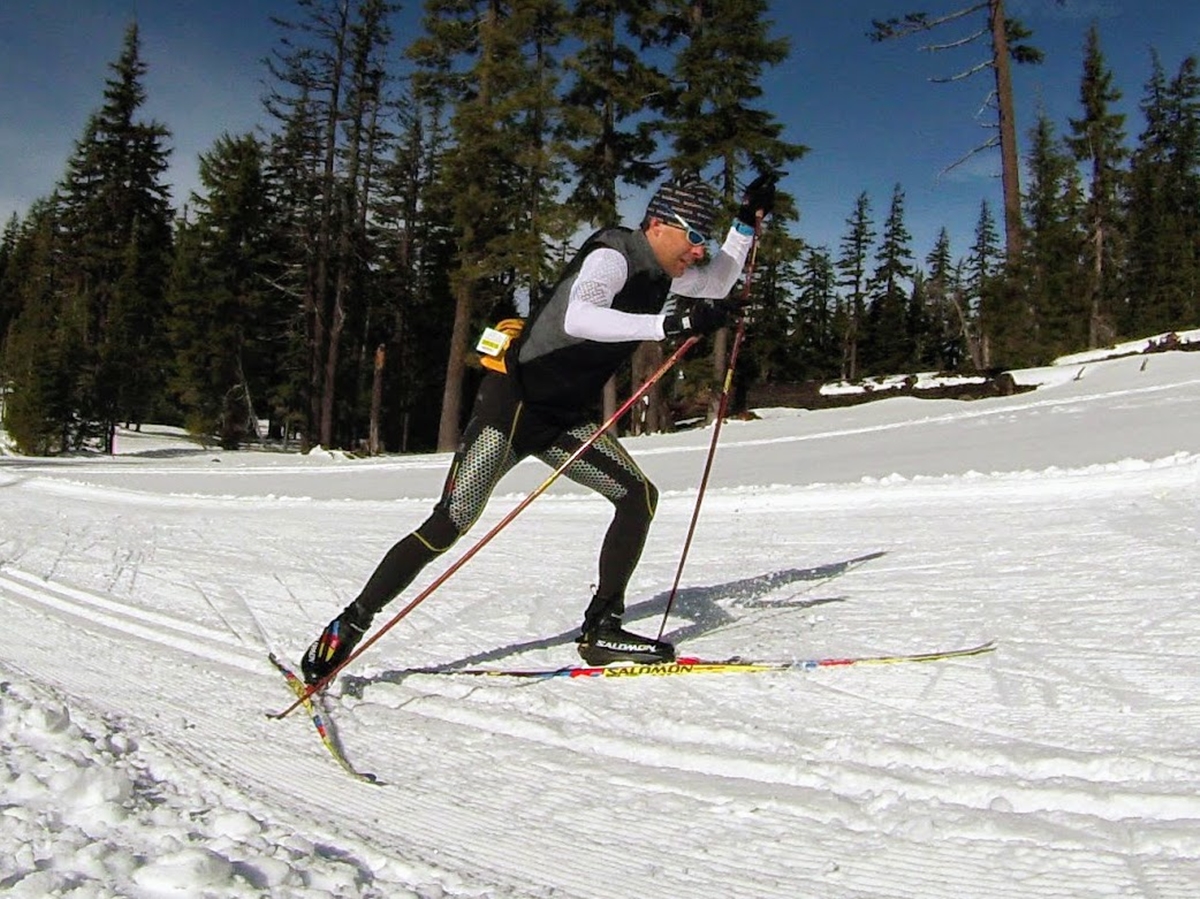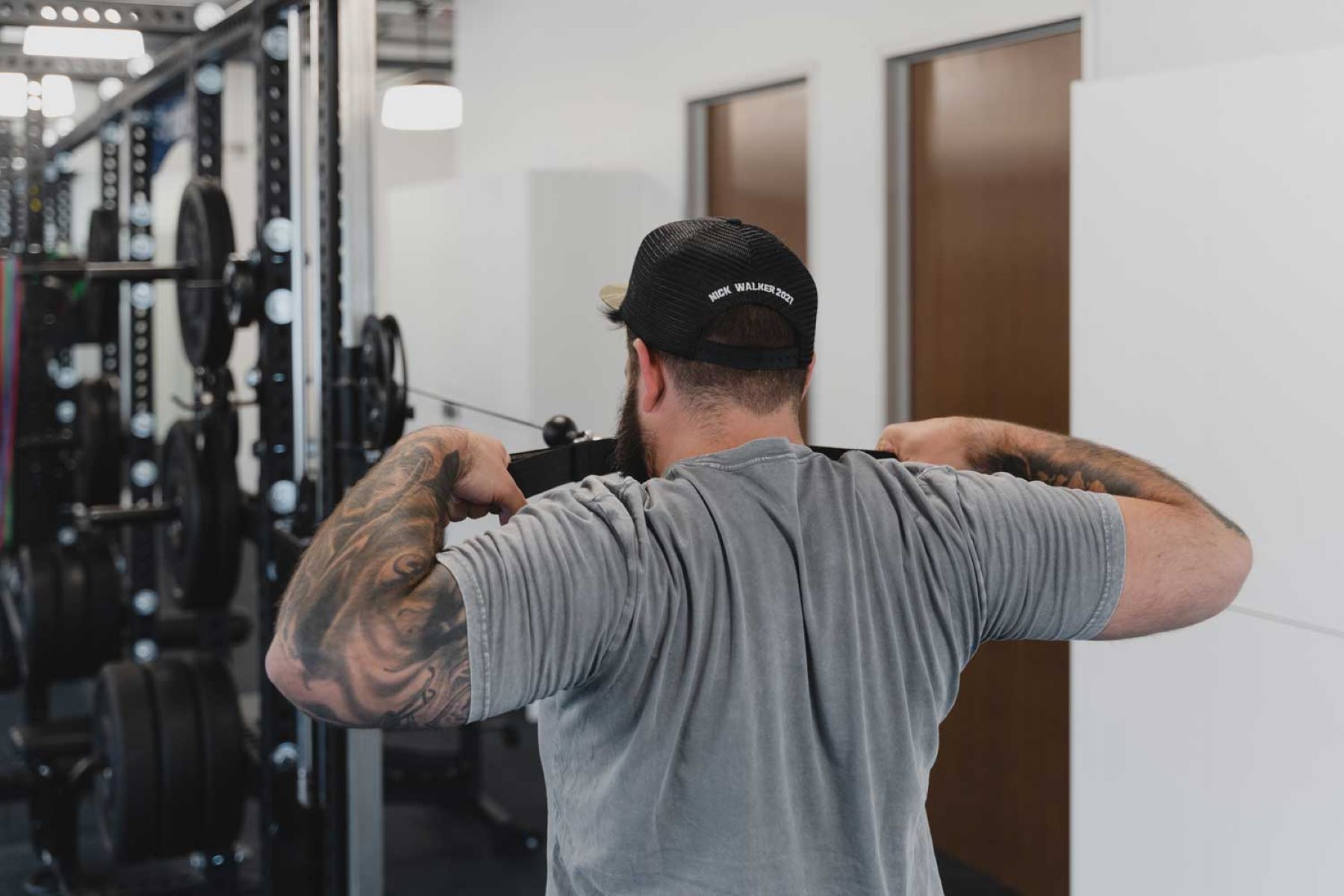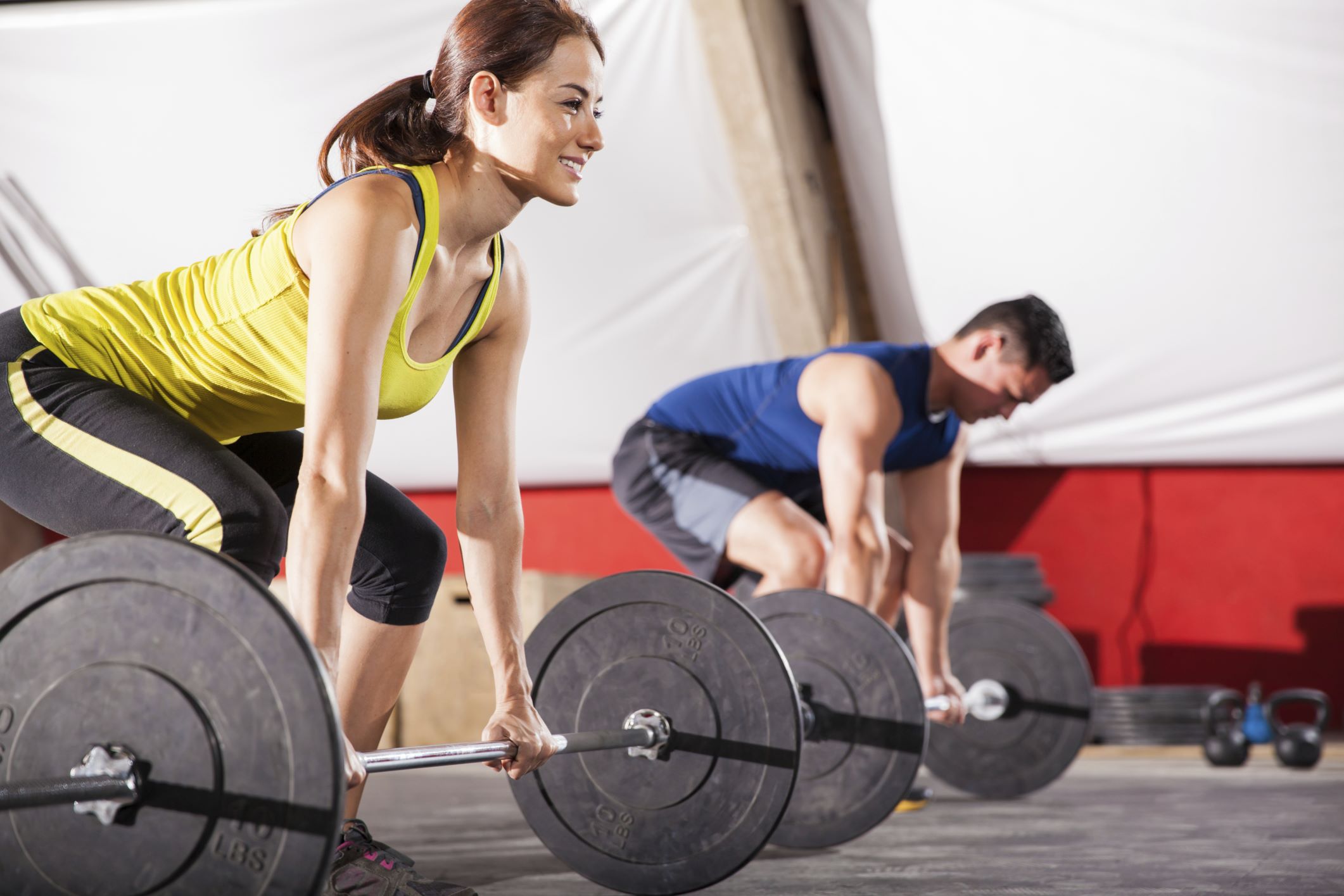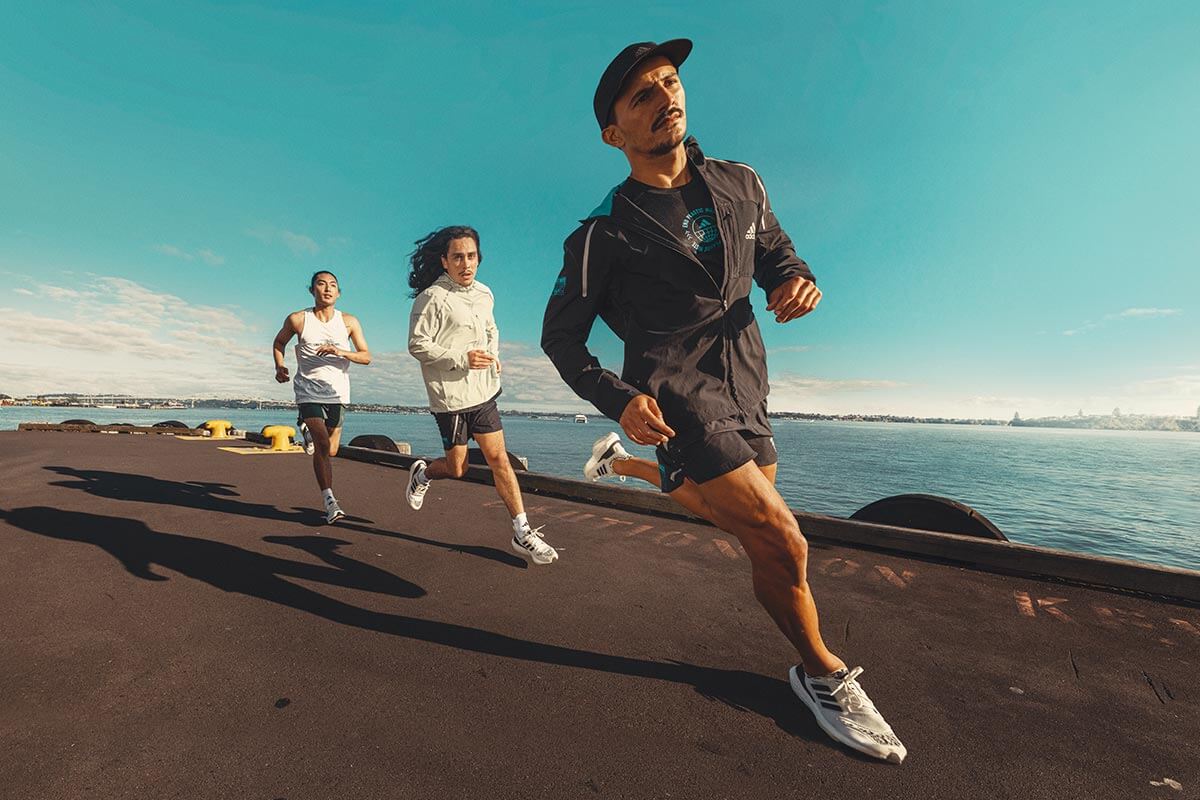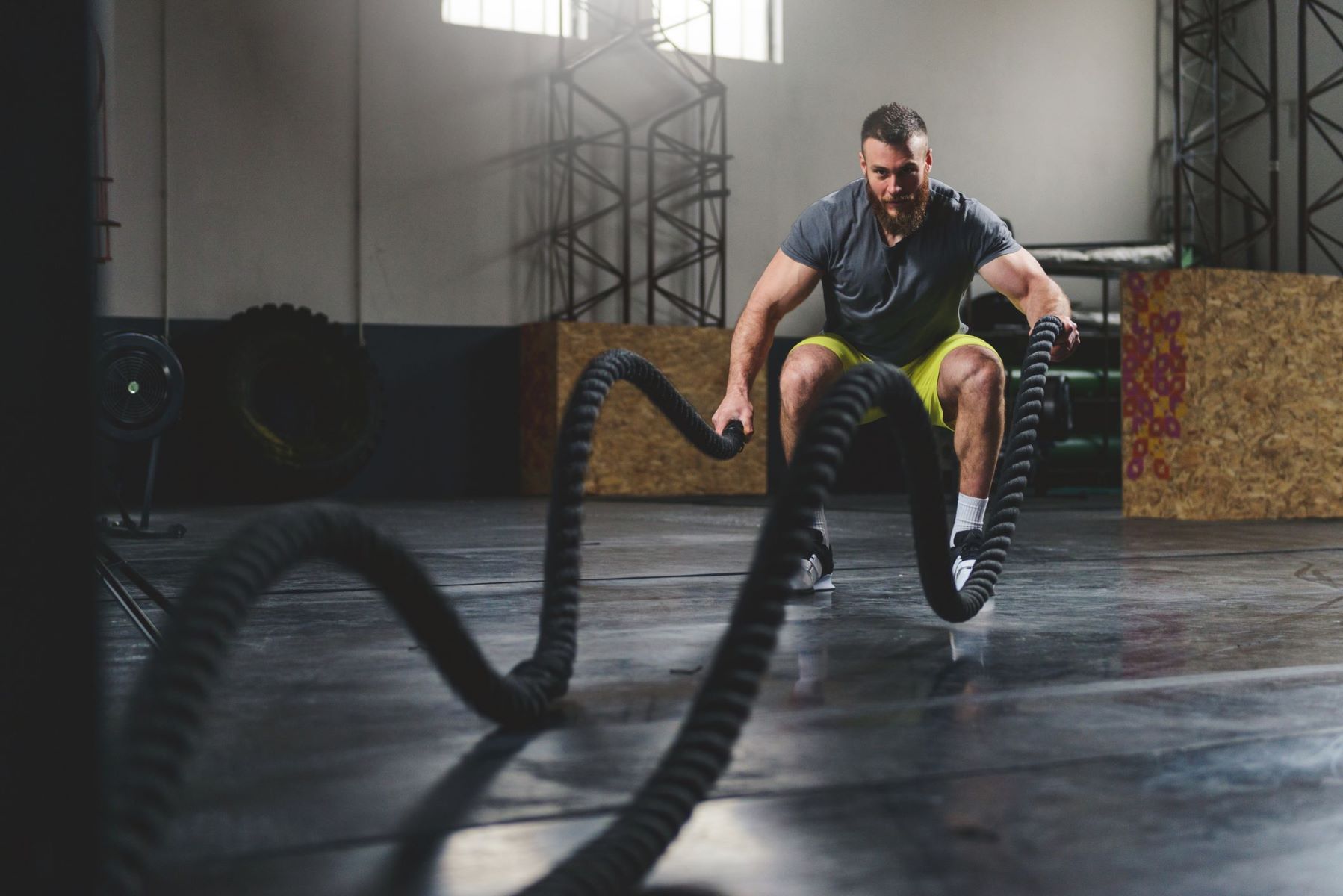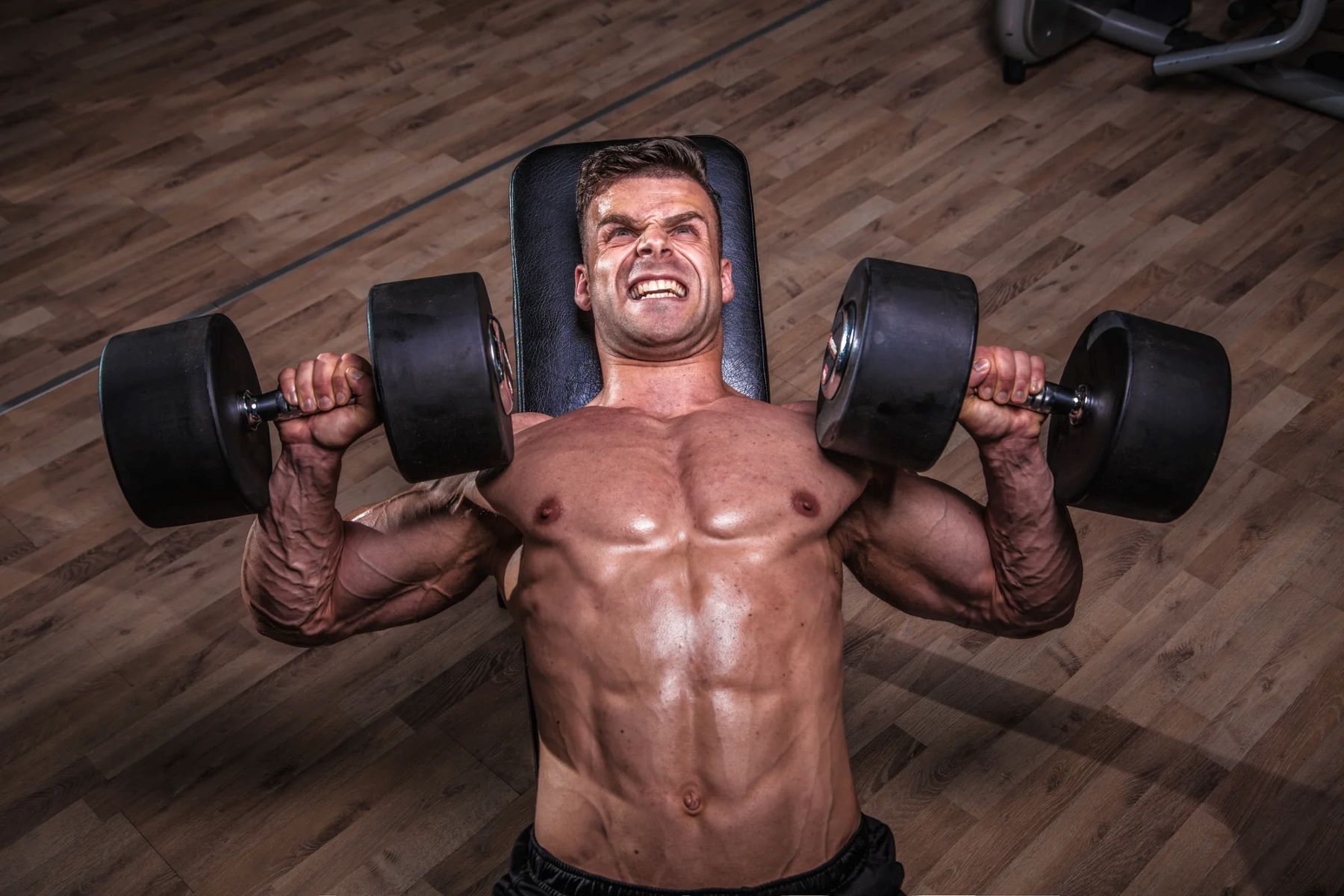

Featured
What Is Upper Body Workout
Modified: January 2, 2024
Discover the benefits of a Featured Upper Body Workout and improve your strength and posture. Achieve your fitness goals with effective exercises designed to target your arms, chest, and back.
Introduction
Welcome to the exciting world of upper body workouts! If you’re looking to strengthen and tone your upper body, this comprehensive guide will provide you with all the information you need to get started. Whether you’re a beginner or an experienced fitness enthusiast, incorporating upper body exercises into your routine can yield numerous benefits.
An upper body workout targets the muscles in your chest, back, shoulders, and arms. By engaging these muscle groups, you can improve your overall strength, enhance your posture, and boost your athletic performance. Additionally, a well-developed upper body can give you a more balanced physique and increase your confidence.
Engaging in regular upper body workouts can have a positive impact on your daily life as well. Strong chest and back muscles can improve your posture, preventing back pain and discomfort. Well-trained shoulders and arms can help you perform everyday tasks with ease, such as lifting heavy objects or carrying groceries. Furthermore, a strong upper body can support your performance in various sports and recreational activities.
But what are the specific muscles in the upper body that you’ll be targeting? Understanding the anatomy of your upper body is crucial to tailoring your workouts effectively. The major muscle groups involved include the pectorals (chest muscles), deltoids (shoulders), trapezius and latissimus dorsi (back muscles), and the biceps and triceps (arm muscles).
Now that you have an understanding of the benefits and muscle groups involved, let’s dive deeper into the different types of exercises you can incorporate into your upper body workout routine. Whether you prefer working out at the gym or in the comfort of your own home, there’s a wide range of exercises to choose from to suit your preferences and fitness level.
Remember, consistency and proper form are key to achieving the best results. Don’t rush your progress and always listen to your body. Now, let’s explore the specific exercises you can incorporate into your upper body workout routine to achieve your fitness goals.
Benefits of Upper Body Workout
Engaging in regular upper body workouts offers a host of benefits that go beyond just building muscle. Let’s take a closer look at how incorporating upper body exercises into your fitness routine can positively impact your health and overall well-being.
1. Increased Strength: One of the primary benefits of an upper body workout is improved strength. By targeting the muscles in your chest, back, shoulders, and arms, you can develop greater overall strength and muscular endurance. This can have a positive impact on your day-to-day activities, making tasks such as carrying groceries, lifting heavy objects, and even performing household chores easier and more manageable.
2. Enhanced Posture: The muscles in your upper body play a critical role in maintaining good posture. Regular upper body workouts can help strengthen your core, back, and shoulder muscles, leading to improved posture. Having good posture not only reduces the risk of back and neck pain but also increases your overall confidence and presence.
3. Improved Athletic Performance: A strong upper body is essential for athletes participating in sports that require throwing, hitting, or lifting motions. Whether you’re playing basketball, tennis, or golf, a well-developed upper body can enhance your performance and give you a competitive edge.
4. Boosted Metabolism: Engaging in upper body exercises can increase your metabolic rate, leading to a greater calorie burn both during and after your workout. By building lean muscle mass, your body becomes more efficient at burning calories, even at rest. This can be especially beneficial for those looking to lose weight or maintain a healthy body composition.
5. Increased Bone Density: Resistance training, such as upper body workouts, helps stimulate bone growth and density. By putting stress on your bones through weight-bearing exercises, you can strengthen your skeletal structure and reduce the risk of osteoporosis and fractures, especially important as you age.
6. Improved Functional Fitness: Functional fitness refers to the ability to perform everyday activities with ease and efficiency. Upper body workouts can improve your functional fitness by strengthening the muscles necessary for carrying out common tasks, such as lifting, pushing, and pulling. This can make activities like carrying groceries, lifting heavy objects, or playing with your children or grandchildren much easier and more enjoyable.
7. Mental Well-being: Exercise, including upper body workouts, has been linked to improved mental health and well-being. Physical activity releases endorphins, the feel-good hormones that can reduce stress, anxiety, and depression. It can also boost your self-confidence and improve your body image, leading to a more positive outlook on life.
Incorporating upper body workouts into your fitness routine offers a multitude of benefits for your physical and mental well-being. From increased strength and improved posture to enhanced athletic performance and better bone health, there’s no shortage of reasons to engage in regular upper body exercises. So, let’s dive into the specific exercises you can incorporate into your upper body workout routine to achieve these remarkable benefits!
Upper Body Muscles
Before you begin your upper body workout journey, it is essential to understand the major muscles that compose the upper body. By familiarizing yourself with these muscles, you can effectively target and strengthen them during your workouts.
1. Pectorals (Chest Muscles): The pectorals, also known as the chest muscles, are located in the front of your upper body. They consist of two main muscles: the pectoralis major and the pectoralis minor. The pectoralis major is responsible for movements such as pushing and hugging, while the pectoralis minor helps stabilize the shoulder blade.
2. Deltoids (Shoulder Muscles): The deltoids are the muscles that give your shoulders their rounded shape. They are made up of three parts: the anterior deltoid, responsible for lifting your arm to the front; the medial deltoid, responsible for raising your arm to the side; and the posterior deltoid, responsible for moving your arm backward.
3. Trapezius and Latissimus Dorsi (Back Muscles): The trapezius and latissimus dorsi muscles are key players in your back. The trapezius muscle runs down the back of your neck and upper spine, while the latissimus dorsi stretches from the top of your shoulders to the lower back. These muscles are responsible for movements such as pulling, rowing, and shrugging.
4. Biceps and Triceps (Arm Muscles): The biceps and triceps are two muscle groups that make up your arms. The biceps, located at the front of your upper arm, are responsible for flexing the elbow and bringing your forearm towards your upper arm. The triceps, located at the back of your upper arm, are responsible for extending the elbow and straightening your arm.
5. Rotator Cuff Muscles: The rotator cuff is a group of muscles and tendons that surround the shoulder joint. They provide stability and control during movements of the shoulder. The four muscles that make up the rotator cuff are the supraspinatus, infraspinatus, teres minor, and subscapularis.
Understanding the muscles involved in your upper body will help you tailor your workouts to target specific areas and achieve balanced strength. It’s important to note that different exercises will engage these muscles to varying degrees. By incorporating a variety of exercises that target each muscle group, you can develop balanced strength and achieve the best results.
Now that you have a clear understanding of the upper body muscles, it’s time to explore the different types of upper body exercises you can incorporate into your workout routine. Whether you prefer bodyweight exercises or using equipment like dumbbells or resistance bands, there’s a wide range of options to suit your preferences and fitness level.
Types of Upper Body Exercises
When it comes to working out your upper body, there is a plethora of exercises to choose from. Whether you prefer bodyweight exercises, resistance training, or a combination of both, the key is to incorporate a variety of exercises that target different muscle groups to ensure a well-rounded workout. Here are some popular types of upper body exercises:
1. Push-Ups: Push-ups are a classic bodyweight exercise that primarily targets the chest muscles (pectoralis major). They also engage the shoulders, triceps, and core. Variations such as incline or decline push-ups can be used to modify the intensity or target different muscle areas.
2. Pull-Ups/Chin-Ups: Pull-ups and chin-ups are excellent exercises for targeting the back muscles, especially the latissimus dorsi. They also engage the biceps, rear deltoids, and forearms. If you’re a beginner, you can start with assisted variations or use resistance bands to gradually build strength.
3. Dumbbell/Barbell Chest Press: The dumbbell or barbell chest press is an effective exercise for targeting the chest muscles. It also engages the shoulders and triceps. You can perform this exercise on a flat bench, incline bench, or decline bench to target different areas of the chest.
4. Shoulder Press: The shoulder press is a compound exercise that targets the deltoid muscles. It can be performed using dumbbells or a barbell. The exercise involves pressing the weights overhead, engaging the shoulders, triceps, and upper back muscles.
5. Bent-Over Rows: Bent-over rows are great for targeting the back muscles, specifically the lats and rhomboids. This exercise can be done with dumbbells, barbells, or resistance bands. By pulling the weight towards your body while maintaining a bent-over position, you engage the back muscles and improve posture.
6. Bicep Curls: Bicep curls are isolation exercises that target the biceps muscles. You can perform them using dumbbells, barbells, or resistance bands. By flexing your elbows and curling the weights towards your shoulders, you effectively engage the biceps.
7. Tricep Dips: Tricep dips are bodyweight exercises that primarily target the triceps. They can be performed on parallel bars or using a bench. By bending and straightening your arms, you engage the triceps muscles.
8. Plank Rows: Plank rows combine core stability and upper body strength. By performing a plank position with dumbbells or kettlebells, you engage the core, shoulders, back, and biceps. This exercise improves overall stability and strength.
These are just a few examples of the many upper body exercises available to you. Remember to always use proper form and start with weights that challenge you but allow you to maintain good technique. As you progress, you can increase the weight or repetitions to continue challenging your muscles and stimulating growth.
Next, let’s take a deep dive into specific upper body workouts for different muscle groups, such as chest exercises, back exercises, shoulder exercises, and arm exercises.
Chest Workout
A strong and well-developed chest not only enhances your overall physique but also contributes to upper body strength and functional movements. Incorporating a variety of chest exercises into your workout routine can help you achieve a well-rounded and powerful chest. Here are some effective chest exercises to consider:
1. Barbell Bench Press: The barbell bench press is a classic compound exercise that targets the pectoralis major muscles. Lie flat on a bench, lower the barbell to your chest, and press it back up to the starting position. This exercise can be done with different grip widths to emphasize different areas of the chest.
2. Dumbbell Chest Press: Similar to the barbell bench press, the dumbbell chest press targets the pectoralis major muscles. Lie flat on a bench and hold dumbbells in each hand at chest level. Press the dumbbells upwards until your arms are fully extended, and then lower them back down. This exercise allows for a greater range of motion and can help to correct strength imbalances between each side of the body.
3. Push-Ups: Push-ups are a versatile bodyweight exercise that primarily targets the chest, shoulders, and triceps. Begin in a plank position with your hands slightly wider than shoulder-width apart. Lower your body until your chest almost touches the ground, and then push back up. Modify the difficulty by performing push-ups on your knees or elevating your hands on an incline surface.
4. Dumbbell Flyes: Dumbbell flyes target the chest muscles, specifically the pectoralis major and minor. Lie on a bench with a dumbbell in each hand. Begin with your arms extended overhead, and then open your arms out to the sides in a wide arc. Return to the starting position by squeezing your chest muscles. Focus on maintaining control and feeling the stretch in your chest as you perform this exercise.
5. Cable Crossovers: Cable crossovers are an isolation exercise that targets the chest muscles. Stand in the middle of a cable machine with the cables set at shoulder height. Extend your arms out to the sides in a sweeping motion, crossing them in front of your body. Return to the starting position by controlling the movement and feeling the contraction in your chest muscles.
6. Incline Bench Press: The incline bench press focuses on the upper portion of the chest muscles. Set the bench at an incline angle (around 30-45 degrees) and perform the barbell or dumbbell bench press with the incline. This exercise places more emphasis on the upper chest and shoulders, providing a well-rounded chest workout.
7. Chest Dips: Chest dips are an advanced bodyweight exercise that targets the chest and triceps. Use parallel bars or a dip station to support your bodyweight. Lower yourself by bending your elbows and leaning slightly forward, then push back up to the starting position. To place more emphasis on the chest muscles, lean your torso forward and keep your elbows flared out to the sides.
When designing your chest workout routine, it’s important to prioritize compound exercises, such as the bench press and push-ups, which engage multiple muscle groups simultaneously. Supplementing these exercises with isolation exercises, like flyes and cable crossovers, can help target specific areas of the chest and further develop muscle definition.
Remember to start with a weight that challenges you but allows for proper form. Gradually increase the weight and repetitions as you gain strength and improve. Vary your exercises and incorporate different chest workouts into your routine to keep your muscles guessing and promote continuous growth.
Now that you have some effective chest exercises at your disposal, it’s time to focus on another major muscle group in your upper body – the back muscles.
Back Workout
A well-developed back not only contributes to a strong and balanced upper body but also plays a crucial role in maintaining good posture and overall strength. Incorporating a variety of back exercises into your workout routine can help you achieve a strong and defined back. Here are some effective back exercises to consider:
1. Lat Pulldowns: Lat pulldowns are a popular exercise that targets the latissimus dorsi muscle, commonly known as the lats. Sit at a lat pulldown machine, grab the bar with an overhand grip, and pull it down towards your chest. Focus on using your back muscles to perform the movement rather than relying solely on your arms.
2. Bent-Over Rows: Bent-over rows are an excellent compound exercise that targets the back muscles, including the rhomboids, trapezius, and latissimus dorsi. Stand with your feet shoulder-width apart, bend your knees slightly, and bend forward at the hips. Hold a barbell or dumbbells with an overhand grip and pull the weight towards your abdomen, squeezing your shoulder blades together.
3. Single-Arm Dumbbell Rows: Single-arm dumbbell rows are a unilateral exercise that targets the lats, rhomboids, and lower back. Place one hand and one knee on a bench, with your other foot positioned on the floor. Holding a dumbbell in the opposite hand, pull the weight upwards towards your hip, focusing on engaging your back muscles. Repeat on the other side.
4. Pull-Ups: Pull-ups are a challenging bodyweight exercise that primarily targets the lats, as well as the biceps and other back muscles. Using an overhand grip, hang from a pull-up bar with your arms fully extended. Pull your body up until your chin reaches the bar, then lower yourself back down with control. If you’re a beginner, start with assisted variations or use resistance bands for support.
5. Chin-Ups: Chin-ups are similar to pull-ups but involve an underhand grip. This grip primarily targets the biceps, along with the lats and other back muscles. Hang from a pull-up bar with your palms facing towards you, then pull your body up until your chin clears the bar. Lower yourself back down with control.
6. Deadlifts: Deadlifts are a compound exercise that engages multiple muscle groups, including the erector spinae in the lower back. Stand with your feet shoulder-width apart, bend down with a flat back, and grip the barbell with an overhand grip. Lift the barbell by extending your hips and knees, then lower it back to the ground with control. Proper form and technique are crucial when performing deadlifts.
7. Reverse Flyes: Reverse flyes target the muscles of the upper back and rear shoulder region, including the rhomboids and posterior deltoids. Stand with your feet shoulder-width apart, holding a pair of dumbbells. Bend forward at the waist and slightly bend your knees. Raise your arms out to the sides, squeezing your shoulder blades together, and then lower them back down with control.
When incorporating back exercises into your workout routine, remember to focus on proper form and engage your back muscles throughout the movements. Start with a weight that challenges you but allows for proper execution. Gradually increase the weight and repetitions as you gain strength and improve.
It’s important to note that back exercises complement exercises targeting the chest and shoulders, creating a balanced and well-defined upper body. By incorporating a combination of push and pull exercises, you can achieve a functional and aesthetically pleasing physique.
Now that you have an arsenal of back exercises, let’s shift our focus to another important muscle group – the shoulders.
Shoulder Workout
Building strong and defined shoulders not only enhances your overall physique but also improves upper body strength and stability. A well-rounded shoulder workout should target all three heads of the deltoid muscles – the anterior, medial, and posterior deltoids. Including a variety of shoulder exercises in your routine can help you achieve a balanced and powerful shoulder girdle. Here are some effective shoulder exercises to consider:
1. Overhead Press: The overhead press is a compound exercise that targets all three heads of the shoulders. Stand with your feet shoulder-width apart, and hold a barbell or dumbbells at shoulder height. Press the weight overhead until your arms are fully extended, then lower it back down. This exercise can be done seated or standing, using various grips and equipment.
2. Dumbbell Lateral Raises: Dumbbell lateral raises primarily target the medial deltoids, the side of the shoulders. Stand with your feet shoulder-width apart, holding a dumbbell in each hand. With a slight bend in your elbows, lift the dumbbells out to the sides until your arms are parallel to the ground. Slowly lower them back down with control.
3. Arnold Press: The Arnold press is a variation of the overhead press that targets all three heads of the shoulders. Start with the dumbbells at shoulder height, palms facing your body. As you press the weights upward, rotate your palms to face forward. Lower the dumbbells back down, and rotate your palms back to the starting position. This exercise provides a unique range of motion and engages the shoulder muscles in a different way.
4. Front Raises: Front raises primarily target the anterior deltoids, the front of the shoulders. Hold a dumbbell in each hand, standing with your feet shoulder-width apart. With a slight bend in your elbows, lift the dumbbells in front of you until they reach shoulder height. Lower them back down under control. This exercise can also be done one arm at a time.
5. Bent-Over Rear Delt Raises: Bent-over rear delt raises target the posterior deltoids, the rear shoulders. Bend forward at the waist, holding a dumbbell in each hand, palms facing each other. With a slight bend in your elbows, lift the dumbbells out to the sides until your arms are parallel to the ground. Focus on squeezing your shoulder blades together as you perform this movement.
6. Upright Rows: Upright rows target both the medial and anterior deltoids, as well as the upper traps. Stand with your feet shoulder-width apart, holding a barbell or dumbbells in front of you with an overhand grip. Lift the weight straight up, leading with your elbows, until it reaches chest height. Lower it back down with control.
7. Shoulder Shrug: Shoulder shrugs primarily target the upper traps, which contribute to overall shoulder development. Hold a barbell or dumbbells at your sides, and lift your shoulders towards your ears. Pause for a moment at the top, then lower them back down. This exercise can help improve posture and enhance shoulder stability.
When performing shoulder exercises, it’s important to maintain proper form and technique. Start with a weight that allows you to perform the exercises with good control and range of motion. Gradually increase the weight and repetitions as you gain strength and improve.
Remember to listen to your body and avoid overtraining the shoulder muscles, as they are susceptible to injury. It’s also essential to balance your shoulder workouts with exercises that target other muscle groups, such as the chest, back, and arms, for overall upper body strength and balance.
Now that you have a solid understanding of effective shoulder exercises, let’s shift our focus to another key muscle group in the upper body – the arms.
Arm Workout
Having strong and well-defined arms is a common fitness goal for many individuals. An effective arm workout can help you develop muscular biceps, triceps, and forearms, adding both strength and aesthetic appeal to your upper body. Here are some exercises that target these specific muscle groups:
1. Bicep Curls: Bicep curls are classic exercises that primarily target the biceps muscles. Stand with your feet shoulder-width apart, holding a dumbbell in each hand. With your palms facing forward, curl the dumbbells towards your shoulders, flexing your elbows. Slowly lower the weights back down to the starting position.
2. Hammer Curls: Hammer curls put the emphasis on the brachialis muscle, one of the key muscles of the upper arm. Stand with your feet shoulder-width apart, holding a dumbbell in each hand. Keep your palms facing inwards throughout the movement, and curl the dumbbells towards your shoulders. This exercise can help increase overall arm size and improve grip strength.
3. Tricep Dips: Tricep dips are effective bodyweight exercises that target the triceps muscles. Position yourself on parallel bars or a stable elevated surface, with your arms fully extended. Lower yourself down by bending your elbows, keeping your body close to the bars, and then push back up to the starting position. To increase the difficulty, extend your legs forward or elevate your feet on another bench.
4. Tricep Pushdowns: Tricep pushdowns are commonly performed using a cable machine. Stand facing the cable machine with your feet shoulder-width apart. Grip the rope or a straight bar attached to the high pulley with an overhand grip. Push the bar down until your elbows are fully extended, and then return to the starting position by bending your elbows. This exercise targets the triceps and can be done with various attachments to target different areas of the triceps.
5. Close Grip Bench Press: The close grip bench press specifically targets the triceps while also engaging the chest and shoulders. Lie flat on a bench and grip the barbell with your hands closer together than shoulder-width apart. Lower the bar towards your chest, keeping your elbows close to your sides, and then press it back up to the starting position.
6. Wrist Curls: Wrist curls target the forearm muscles, specifically the flexors and extensors. Sit on a bench with your forearms resting on your thighs, palms facing up. With a light dumbbell in each hand, curl your wrists upward, then lower them back down. For reverse wrist curls, turn your palms down and curl your wrists upward.
7. Concentration Curls: Concentration curls isolate the biceps and help to improve their peak. Sit on a bench with your legs spread apart. Hold a dumbbell in one hand, let it hang between your legs, and rest your elbow on the inside of your thigh. Curl the dumbbell towards your shoulder, focusing on squeezing your bicep at the top of the movement. Repeat on the other arm.
When performing arm exercises, it’s important to maintain proper form and avoid using excessive weight. Focus on feeling the targeted muscles working throughout each exercise. Gradually increase the weight or repetitions as your strength improves. Additionally, ensure that you give your arms enough rest and recovery time between workouts to allow for muscle growth.
Remember, a well-rounded upper body workout routine should include exercises for other major muscle groups such as the chest, back, and shoulders. By targeting these areas, you’ll achieve overall upper body strength and proportion.
Now that you have a comprehensive arm workout at your disposal, it’s time to explore how to combine upper body and core exercises for a complete upper body workout.
Core and Upper Body Workout
A strong core is essential for overall stability, balance, and functional movement. Combining core exercises with upper body exercises in your workout routine not only saves time but also helps you achieve a comprehensive and efficient full-body workout. Here’s a sample core and upper body workout to target both muscle groups:
1. Plank: Begin with a plank exercise to engage the core muscles. Start in a push-up position with your hands directly under your shoulders and your body forming a straight line from head to toe. Hold this position for 30-60 seconds, engaging your core muscles and maintaining proper form.
2. Push-Ups: Next, move into push-ups, which target the chest, shoulders, triceps, and core. Perform as many push-ups as you can with proper form, focusing on engaging the core and maintaining a straight line from head to heels. Modify the exercise by performing knee push-ups if needed.
3. Russian Twists: Transition to Russian twists to engage the obliques and improve core strength. Sit on the ground with your knees bent and feet raised. Lean back slightly, balancing on your sit bones, and twist your torso from side to side, tapping the ground on each side with your hands.
4. Bent-Over Rows: Grab a pair of dumbbells and perform bent-over rows to target the back muscles. Bend forward at the hips with a slight bend in your knees. Keep your back flat, and pull the dumbbells towards your chest, squeezing your shoulder blades together. Lower the weights back down in a controlled manner.
5. Bicycle Crunches: Bicycle crunches are another effective exercise for the core, targeting the rectus abdominis and obliques. Lie on your back with your hands behind your head and your knees bent. Alternate bringing your right elbow towards your left knee while straightening your right leg, then switch sides, bringing your left elbow towards your right knee.
6. Overhead Press: Move into an overhead press to target the shoulder muscles. Stand with your feet shoulder-width apart, holding dumbbells or a barbell at shoulder height. Press the weights overhead, extending your arms fully. Lower the weights back down to shoulder height with control.
7. Plank with Shoulder Taps: Finish off with a core-strengthening exercise – the plank with shoulder taps. Start in a plank position, then lift one hand to tap the opposite shoulder, while engaging your core to stabilize your body. Alternate sides, tapping each shoulder for 10-12 reps.
Perform each exercise for the recommended number of sets and repetitions, resting for a suitable duration between sets. Remember to focus on maintaining proper form and engaging the target muscle groups throughout each exercise.
Combining core and upper body exercises in your workout routine not only saves time but also provides a more balanced and functional approach to training. By strengthening your core, you improve stability and allow for better performance in upper body exercises. Conversely, incorporating upper body exercises into your core routine helps engage additional muscles and increases overall calorie burn during your workout.
Remember to listen to your body, progress at your own pace, and consult a fitness professional if you have any concerns or questions regarding proper form or exercise modifications. Over time, you’ll notice greater strength, improved posture, and increased overall fitness as you continue to challenge your core and upper body through targeted exercises.
Now that you have a comprehensive workout that combines core and upper body exercises, you’re well on your way to achieving a strong and well-rounded physique.
Tips for an Effective Upper Body Workout
To make the most of your upper body workout and achieve your fitness goals, here are some essential tips to keep in mind:
1. Warm-up Properly: Before diving into your upper body workout, it’s crucial to warm up your muscles and prepare them for the upcoming exercises. Spend 5-10 minutes engaging in dynamic stretches, light cardio, or bodyweight exercises that target the upper body muscles.
2. Prioritize Proper Form: Maintaining proper form throughout your exercises is vital to prevent injuries and maximize the effectiveness of your workout. Pay close attention to your posture, alignment, and range of motion. If needed, start with lighter weights and gradually progress as your form improves.
3. Focus on Mind-Muscle Connection: Develop a strong mind-muscle connection during your upper body exercises. Concentrate on the specific muscles you’re targeting and make a conscious effort to engage and squeeze them throughout each movement. This mindful approach enhances muscle activation and promotes better results.
4. Gradually Increase Intensity: To continuously challenge your muscles and promote growth, gradually increase the intensity of your upper body workouts. This can be achieved by adding more weight, increasing repetitions, or reducing rest periods between sets. Aim for progressive overload to avoid plateauing.
5. Incorporate Variety: Avoid monotony by incorporating a variety of upper body exercises into your routine. Target different muscle groups, use different equipment, and try various exercise variations to keep your workouts engaging and effective. Switching up your exercises also helps prevent muscle adaptation and promotes well-rounded development.
6. Allow for Proper Recovery: Adequate rest and recovery are essential for muscle growth and injury prevention. Allow at least 48 hours of rest between intense upper body workouts to give your muscles time to repair and rebuild. Utilize active recovery techniques, such as foam rolling and stretching, to help alleviate muscle soreness.
7. Stay Hydrated: Hydration is important for optimal performance and muscle function. Drink plenty of water before, during, and after your upper body workout to stay hydrated and facilitate proper muscle function. Dehydration can lead to decreased performance and increased risk of injury.
8. Listen to Your Body: Pay attention to your body’s signals during your upper body workout. If something feels painful or uncomfortable, adjust your form or modify the exercise. Additionally, be mindful of any signs of overtraining, such as persistent fatigue or decreased strength, and allow yourself enough time to recover.
9. Seek Professional Guidance: If you’re new to upper body workouts or have specific fitness goals, consider working with a fitness professional to design a customized workout plan. They can provide guidance on proper form, exercise selection, and progression to ensure you’re making the most of your workouts and avoiding injury.
10. Stay Consistent: Consistency is key when it comes to achieving your upper body fitness goals. Aim for regular upper body workouts, whether it’s two to three times per week or as part of a larger full-body routine. Consistency, combined with proper nutrition and rest, will yield the best long-term results.
By following these tips, you can optimize your upper body workouts, enhance your strength and muscular development, and achieve your desired fitness goals. Remember that results take time, so stay patient, stay motivated, and enjoy the journey to a stronger and healthier upper body!
Conclusion
Congratulations! You’ve now gained a comprehensive understanding of the benefits, muscles, types of exercises, and useful tips for an effective upper body workout. By incorporating these insights into your fitness routine, you’re well-equipped to embark on your journey to a stronger and more sculpted upper body.
Upper body workouts offer numerous benefits, including increased strength, improved posture, enhanced athletic performance, and boosted metabolism. By targeting specific muscle groups such as the chest, back, shoulders, and arms, you can achieve a balanced and powerful physique.
It’s important to remember that consistency and proper form are key to achieving the best results. Whether you’re using bodyweight exercises or incorporating equipment like dumbbells or resistance bands, focus on maintaining good technique and gradually increasing the intensity of your workouts. This will help you continuously challenge your muscles and promote growth.
Additionally, don’t forget the importance of a well-rounded approach to your upper body workout routine. This involves targeting different muscle groups, incorporating variety, and allowing for proper rest and recovery. Listening to your body, staying hydrated, and seeking professional guidance when needed are also essential to ensuring safe and effective workouts.
By staying committed, maintaining consistency, and putting in the effort, you’ll be able to achieve your desired upper body strength and physique. Along the way, celebrate your progress and remember that everyone’s fitness journey is unique. Embrace the process and enjoy the benefits of a stronger, healthier, and more confident upper body.
Now it’s time to put your newfound knowledge into action and start your upper body workout adventure. Remember, the journey to a stronger upper body begins with that first step – so grab your weights, find your favorite exercise routine, and let the gains begin!
